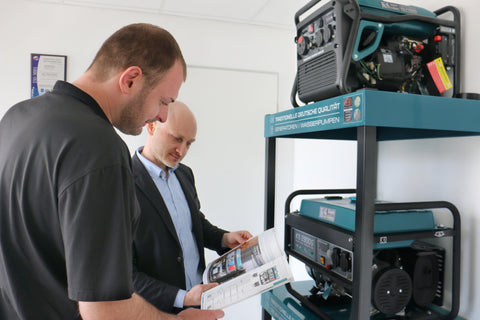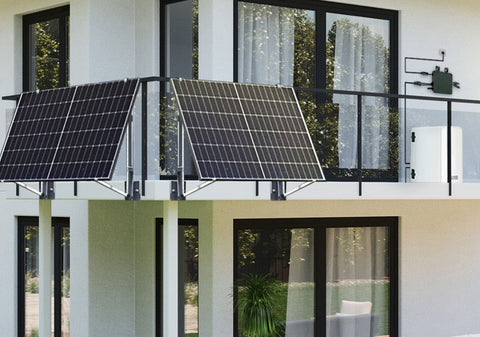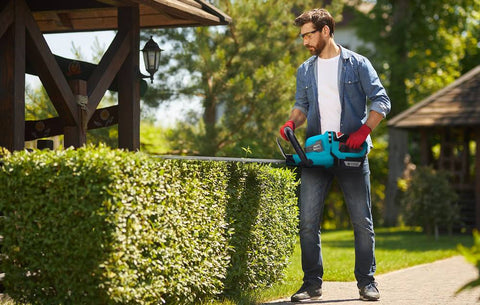The article is copyrighted. Republishing the entire article or its parts without a clear reference to the source (a link to the Könner & Söhnen website) is not permitted.
The KS 2240BSB battery storage features 2 separate PV inputs (2 x MPPT) and 2 separate outputs with energy management, making it an ideal extension for your balcony solar power system.
Solar panels are individually connected to each PV input of the battery storage, and the built-in MPPT controller finds the Maximum Power Point for each module. This is particularly important if the modules have different solar irradiance conditions or are shaded. This is a significant difference compared to battery storages where multiple solar modules are connected in parallel or series to the same MPPT.
Two modes are generally available:



The battery storage in the "Charge and then discharge" mode is primarily charged to ensure energy availability for the evening, when electricity consumption is high, etc.
If the battery is full, the energy from the solar panels is directed to the corresponding outputs.
If energy from the solar panels is no longer available, the battery enters discharge mode and supplies the outputs with the power set in the "Discharge settings." Each output receives 50% of the set power.
This continues until the set Depth of Discharge (DOD) is reached.


Once the set DOD is reached, the outputs are turned off.
If the battery should not discharge further until the next morning (when the sun shines again), it switches to charging mode.
The battery storage in the "Pass through" mode charges only when the energy from the solar panels exceeds the set output power.
Example 1: "Pass through" mode is set, and the output power is set to 100W:
The two PV inputs are bypassed until the total power reaches the set value (in this case, 100W total, 50W per output). If the input power exceeds the set output power, the corresponding PV input switches to charging the battery + output (corresponding to the set output power, 50% per output). The switching may be delayed because the software works with average values.
In picture 3 from the left, 90W come through from PV1, and an additional 50W (half of the set 100W) come from PV2. The remaining power from PV2 (about 200W) is being stored in the battery. In picture 4 from the left, 50W (50% of the set output power) come through from both PV1 and PV2, and the rest is stored in the battery.
The set output power is always split evenly between the two outputs, with 50% going to each. If only one output is used, only 50% of the set power will be available, unless the PV input is bypassed.
In "Pass through" mode, only the PV inputs that are connected to the corresponding outputs of the micro-inverter are active; otherwise, the corresponding MPPT cannot find the Maximum Power Point because it lacks the load.
In order for both PV inputs to be active only when a load is connected to the output, we recommend using the "Charge and then discharge" mode. For example, with 2 x KS 2240BSB, you could connect 3 or 4 solar panels, each of which can be managed by its own MPPT. This would be necessary if you wanted to install solar panels on 3 sides of the balcony, which would have different irradiation conditions.


















